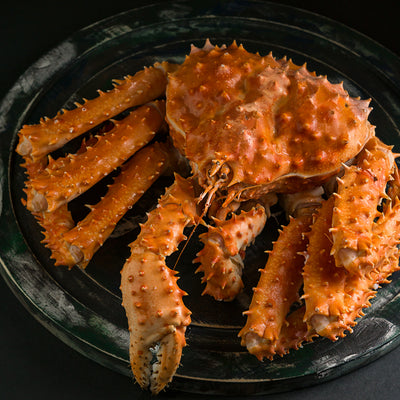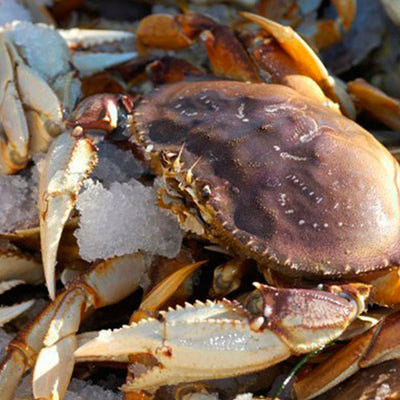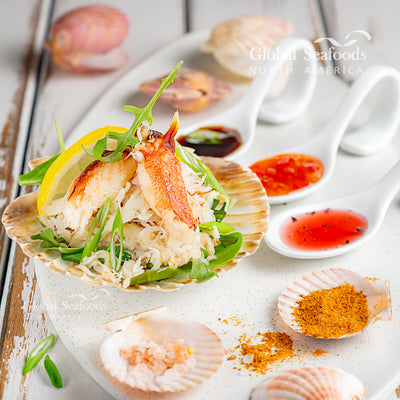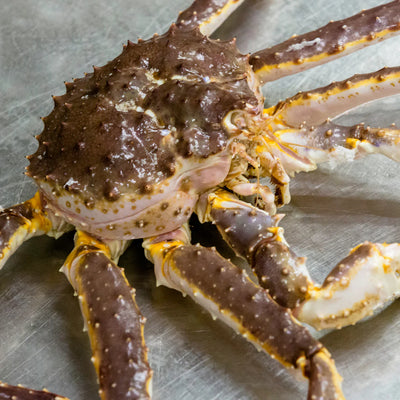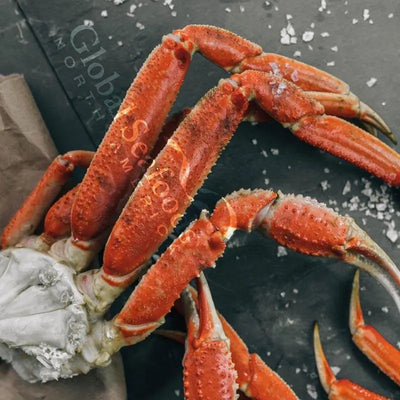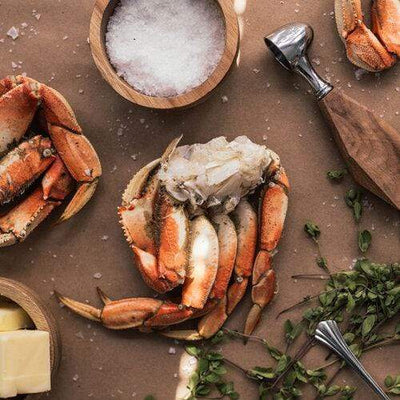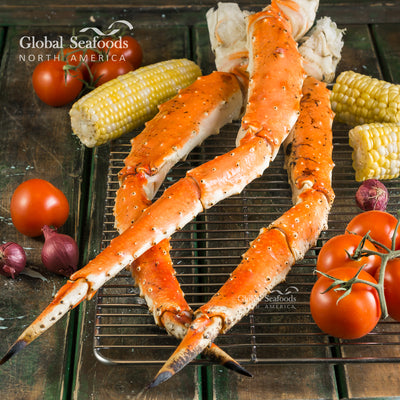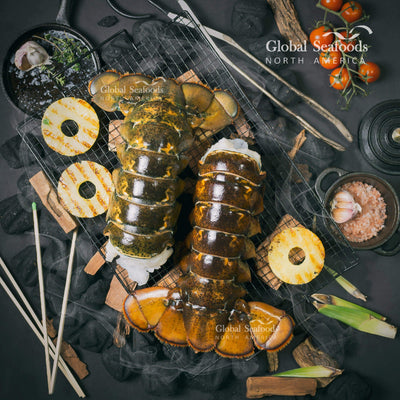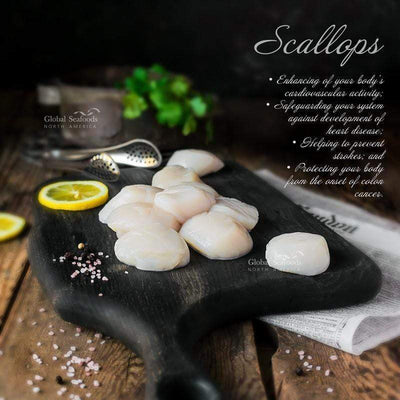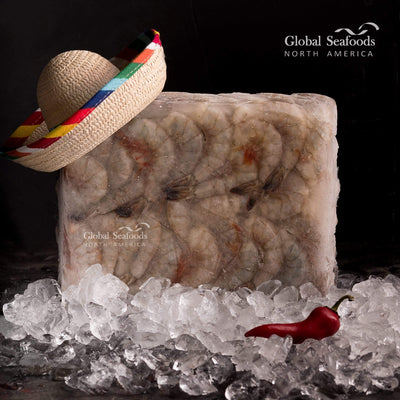How to Cook and Crack Whole Crab: A Step-by-Step Guide

Cook and Crack Whole Crab
There’s nothing quite like the experience of cooking and cracking a whole crab to enjoy its sweet, tender meat. While crab can be enjoyed in many forms, from crab legs to crab cakes, the whole crab offers an entirely different culinary experience. Cooking a whole crab not only maximizes the amount of delicious meat you get, but it also allows you to enjoy a fresh, interactive dining experience.
In this article, we’ll walk you through how to cook and crack whole crab—whether it’s Dungeness Crab, Golden King Crab, or Snow Crab—with easy-to-follow instructions, cooking tips, and expert advice. Whether you're a seafood enthusiast or new to preparing crab, this guide will ensure you get the most out of your next seafood feast.
For premium crab products, visit Global Seafoods to explore a wide variety of options, from whole crabs to crab legs and more.
1. Choosing the Right Crab: Dungeness, King, and Snow Crab
Before diving into the cooking process, it’s important to choose the right type of crab for your meal. Different species of crab offer distinct flavors, textures, and preparation methods. Here’s a quick overview of the most popular options:
Dungeness Crab
Dungeness crab is prized for its slightly sweet, delicate flavor and meaty claws. Found along the West Coast of North America, Dungeness crab is often sold whole and is perfect for steaming or boiling.
- Best For: Steaming, boiling, crab boils
- Where to Buy: Dungeness Crab Whole
Golden King Crab
King crab, especially Golden King Crab, is known for its large, thick legs filled with succulent meat. The flavor is rich and buttery, making it ideal for special occasions.
- Best For: Grilling, steaming, or serving with garlic butter
- Where to Buy: Golden King Crab
Snow Crab
Snow crab features long, slender legs with tender, sweet meat. It’s easier to crack than King Crab and is popular for its flavor and ease of preparation.
- Best For: Boiling, steaming, or grilling
- Where to Buy: Snow Crab Legs
2. How to Cook Whole Crab: Boiling and Steaming Techniques
Cooking whole crab is a straightforward process, with boiling and steaming being the most common methods. Both techniques preserve the crab's natural flavors while ensuring the meat stays moist and tender.
Boiled Whole Crab
Boiling is one of the easiest and most foolproof ways to cook whole crab. Here’s how to do it:
- Prepare the Water: Fill a large pot with enough water to cover the crabs. Add 1-2 tablespoons of salt per gallon of water. You can also add spices like bay leaves or Old Bay seasoning for extra flavor.
- Bring to a Boil: Bring the water to a rolling boil.
- Add the Crab: Submerge the whole crab in the boiling water. If you're cooking multiple crabs, ensure the pot is large enough to avoid overcrowding.
- Cook Time: Cook the crab for 10-15 minutes, depending on the size. A good rule of thumb is 12-15 minutes for large Dungeness crabs and 8-10 minutes for smaller crabs like Snow Crab.
- Cooling: Once the crab is cooked, remove it from the pot and place it in an ice bath to stop the cooking process and make it easier to handle.
Steaming Whole Crab
Steaming is another great way to cook whole crab, as it retains more of the crab's natural sweetness. Here’s how to steam crab:
- Prepare the Steamer: Fill a large pot with 1-2 inches of water. Place a steaming basket or rack in the pot to keep the crab elevated above the water.
- Bring to a Boil: Bring the water to a boil.
- Add the Crab: Place the whole crab on the steaming rack, cover the pot, and steam for 15-20 minutes, depending on the size of the crab.
- Check for Doneness: The crab is done when the shell turns a bright orange-red color, and the meat inside is firm but tender.
For both methods, you can enhance the flavor by seasoning the water with garlic, lemon, herbs, and spices. To get premium crabs delivered to your door, explore Global Seafoods.
3. How to Crack and Clean Whole Crab: Step-by-Step Guide
Cracking and cleaning a whole crab can seem daunting, but with a few simple tools and techniques, you can extract every last bit of delicious meat.
Tools You’ll Need:
- A large knife or kitchen shears
- Crab crackers or a small mallet
- A seafood fork or small pick
Step 1: Remove the Legs and Claws
Twist off the crab’s legs and claws at the joints. Set them aside for cracking later. You can also break the legs into smaller pieces for easier access to the meat.
Step 2: Remove the Top Shell
Hold the crab on its back and gently pry off the top shell (carapace) using your fingers or a knife. Discard the shell or save it for presentation.
Step 3: Clean the Body
Inside the crab, you’ll find gills, internal organs, and other inedible parts, including the "dead man’s fingers" (feathery gills). Remove these parts and rinse the crab under cold water to clean out any remaining bits.
Step 4: Crack the Legs and Claws
Using a crab cracker or small mallet, gently crack the legs and claws to access the meat inside. Be careful not to crush the meat as you crack the shells.
Step 5: Extract the Body Meat
Break the crab’s body in half and use a small seafood pick or fork to extract the meat from the chambers. Dungeness and King Crabs have a significant amount of meat in their bodies, so don’t skip this step!
For a hands-on demonstration of how to crack and clean crab, check out the instructional videos on the Global Seafoods YouTube Channel.
4. Tips for Enhancing the Flavor of Cooked Crab
While crab meat is delicious on its own, you can elevate the flavor with a few simple accompaniments:
1. Butter and Lemon
Classic melted butter with a squeeze of lemon juice is the perfect pairing for any type of crab. The richness of the butter complements the sweet, briny flavor of the crab.
2. Garlic Butter Sauce
For extra flavor, try making a garlic butter sauce by melting butter with minced garlic, parsley, and a dash of paprika. Drizzle it over the crab meat or use it as a dipping sauce.
3. Old Bay Seasoning
This classic seafood seasoning blend enhances the natural flavors of crab. Simply sprinkle it over the cooked crab or add it to the boiling water for an extra kick of flavor.
4. Serve with Sides
Crab pairs beautifully with a variety of sides like coleslaw, corn on the cob, garlic bread, or a light green salad. For a seafood feast, consider serving your crab alongside other delicacies like shrimp or lobster.
To explore a variety of seafood options that complement crab, check out the selection at Global Seafoods.
5. FAQs: Cooking and Cracking Whole Crab
1. How do I know when the crab is fully cooked?
The crab is done when the shell turns a bright orange-red color, and the meat is firm but still tender. Overcooking can make the meat tough, so it’s important to stick to the recommended cooking times.
2. Can I use the crab shells for anything?
Yes! Crab shells can be used to make a flavorful seafood stock, which is a great base for soups, stews, or sauces.
3. What’s the best type of crab to cook whole?
Dungeness Crab and King Crab are both excellent choices for cooking whole. Dungeness offers sweet, tender meat, while King Crab provides large, flavorful legs.
4. Can I freeze leftover crab?
Yes, you can freeze cooked crab. Simply place the meat in an airtight container or vacuum-sealed bag and freeze for up to 3 months. Thaw it in the refrigerator before reheating.
5. Do I need any special equipment to crack crab?
Crab crackers or kitchen shears are helpful tools for cracking the shell, but a small mallet or even the back of a knife can work in a pinch.
For more gourmet seafood tips and recipe ideas, visit the Global Seafoods YouTube Channel and learn how to prepare the best seafood dishes from the comfort of your home.
Also in Recipes

How to Cook Live Manila Clams at Home: Fresh, Sweet & Delivered Overnight
Discover how to store, clean, and cook Live Manila Clams at home using simple chef techniques. Learn why these Pacific clams are perfect for pasta vongole, steaming, chowders, and more—plus how to order them fresh in a convenient 10 lb bag shipped overnight.

Boiled Crab for Brunch: The Ultimate Guide to Morning Seafood
Discover the joy of Boiled crab for brunch! Learn how to prepare seafood in the morning, its health benefits, and recipes to make your brunch memorable.


